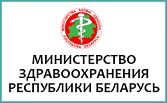Prophylaxis of oncological diseases
Throughout the 20th century, the main emphasis in the problem of cancer prevention was on reducing morbidity. This is undoubtedly relevant, but not enough. An equally important aspect of cancer prevention is the prevention of mortality from this disease. And at the end of the last century this topic became more relevant than ever. Numerous discoveries of scientists make it possible to understand the mechanisms of tumor formation and, in many cases, fundamentally change the situation in this branch of medicine.
In fact, this should be the main goal of public health. If the reduction in morbidity depends entirely on the integrated solution of public health problems and the implementation of appropriate programs at the state level, the medical aspects of the oncological care to the population have a significant impact on mortality. They include, first of all, timeliness of detection and diagnosis of the disease, timeliness and quality of treatment of cancer patients, as well as their rehabilitation in the process of dynamic dispensary observation. From this short list it can be seen that the prevention of tumors is a multifactorial problem. Attempts to solve it by considering individual particular issues (for example, smoking) do not have a significant effect.
The report of the WHO Committee of 1 April 2004 noted that work on cancer prevention and control is curbed by low priority, which is often given by governments and health ministries, excessive emphasis on treatment and costs associated with it, and Also a significant imbalance between the resources allocated to cancer research and the resources that are allocated to the prevention and control of this disease.
Nevertheless, the structure of oncological care for patients, the system of diagnostics, rehabilitation and prevention - all this complex today has significantly expanded its capabilities and is ready to solve problems of a new level. Everyone should see their capabilities and resources, and the opportunities that health facilities give him to preserve and strengthen their health. In world medicine, we already see examples of countries that radically changed the situation with the prevention of cancer and the provision of high-tech medical care to oncological patients. A sharp decline in morbidity and mortality statistics in these cases is an encouraging sign that Russia can achieve such results.
The effect of smoking on the risk of cancer
The effect of smoking on the risk of malignant tumors has been thoroughly studied. Based on a synthesis of the results of epidemiological and experimental studies, working groups of the International Agency for Research on Cancer (IARC), convened in 1985 and 2002, concluded that tobacco smoking is carcinogenic to humans and leads to cancer of the lip, tongue and other parts of the cavity Mouth, pharynx, esophagus, stomach, pancreas, liver, larynx, trachea, bronchi, bladder, kidney, cervix and myeloid leukemia.
Tobacco contains nicotine, which is recognized by international, medical organizations as a substance that causes drug addiction. Nicotine addiction is included in the international classification of diseases. Nicotine meets the key criteria for drug dependence and is characterized by:
- Obsessive, irresistible craving for consumption, despite the desire and repeated attempts to refuse:
- Psychoactive effects that develop when the substance acts on the brain;
- Behavioral patterns caused by exposure to psychoactive substances, including withdrawal syndrome.
In the composition of tobacco smoke, except nicotine are several tens of toxic and carcinogenic substances, including polycyclic aromatic hydrocarbons (PAH) such as benzo (a) pyrene, aromatic amines (naphthylamine, aminobiphenyl), volatile nitroso, tabakospetsificheskie nitrosamines (TSNA), vinyl chloride, benzene, aldehydes (formaldehyde), phenols, chromium, cadmium, polonium-210 , Free radicals, etc. Some of these substances are contained in the tobacco leaf, while others are formed during its processing and combustion. It should be emphasized that the combustion temperature of tobacco in cigarettes is very high when tightening and much lower between puffs, which defines different concentrations of chemicals in the main and sidestream tobacco smoke. Sidestream, for example, contains more nicotine, benzene, PAH than the main stream.
Most carcinogenic and mutagenic substances are contained in the solid phase of tobacco smoke, which remains on the so-called. Cambridge filter when smoking cigarettes in a smoking car. It is customary to call the resin a solid fraction of tobacco smoke, detained by the Cambridge filter, minus water and nicotine. Depending on the type of cigarettes, the filter they are equipped with, the types of tobacco and its processing, the quality and degree of perforation of the cigarette paper, the content of tar and nicotine in tobacco smoke can be very different. Over the past 20-25 years, there has been a significant decrease in the concentrations of tar and nicotine in cigarette smoke from cigarettes produced in developed countries, incl. And in Russia. In most countries, standards for tar and nicotine have been introduced. For the resin, these standards range from 10-15 mg in a cigarette, and for nicotine, 1-1.3 mg in a cigarette.
The carcinogenicity of tobacco smoke was proved in experiments on laboratory animals. Contact with tobacco smoke causes malignant tumors of the larynx and lungs. However, the difficulty of conducting such experiments with the inhalation of tobacco smoke is obvious in view of the impossibility of simulating the smoking process in animals. In addition, as is known, the life span of laboratory animals, such as mice and rats, is very short, which hinders the setting of long-term experiments simulating a prolonged (20 years or more) process of carcinogenesis in humans.
The etiological relationship between smoking and malignant tumors is shown in many epidemiological studies. The relative risk (RR) associated with smoking is different for tumors of different localizations and depends on the age of smoking initiation, the duration of smoking and the number of cigarettes smoked per day.
The risk of cancer of the oral cavity and pharynx in smokers is increased by 2-3 times in comparison with non-smokers, and in those who smoke more than one pack of cigarettes by the day, the relative risk reaches 10.
The risk of cancer of the larynx and lung in smokers is very high. In most epidemiological cohort studies, the dose dependence between the age of smoking initiation, the duration of smoking, the number of cigarettes smoked per day and the indicator of OP is noted. For example, according to a cohort study of English doctors, lung cancer is 7.9 for smokers, 1-14 cigarettes, 12.7 for smokers, 15-24 cigarettes and 25 for those who smoke more than 25 cigarettes a day. The results of the cohort study of the American cancer society and cohort studies conducted in other countries, prove the important role of the age of the beginning of smoking. The greatest OR of lung cancer was observed in men who started smoking before the age of 15 (15.0). In men who started smoking at the age of 15-19; 20-24 and more than 25 years, the PR was 12.8; 9.7 and 3.2, respectively. It should be noted,
The risk of esophageal cancer is 5 times higher among smokers compared to non-smokers. The risk of gastric cancer in smokers is also increased and equal to 1.3-1.5, with smoking increasing the risk of cancer of both cardiac and other parts of the stomach. Smoking is one of the causes of pancreatic cancer. OR of pancreatic cancer in smokers is increased by 2-3 times. Smoking, most likely, does not affect the risk of colorectal cancer, but in a number of epidemiological studies, an association between smoking and adenomatous polyps of the colon has been identified. There is a relationship between smoking and the risk of cancer of the anus (a tumor that has a squamous or transitional cell structure).
Several epidemiological studies have identified an increased risk of hepatocellular cancer associated with smoking. Most likely, smoking increases the risk of hepatocellular liver cancer in combination with alcohol consumption. In addition, it is shown that smoking increases the risk of liver cancer in persons infected with hepatitis B and C viruses. There were no links between smoking and cholangiocellular cancer, as well as malignant tumors of the gallbladder and bile ducts.
Smoking causes bladder and kidney cancer. The risk of bladder cancer among smokers is increased 5-6 times. The relationship between smoking and risk of kidney cancer is more pronounced for squamous and transitional cell carcinoma than for adenocarcinoma.
The relationship between smoking and cervical cancer and intraepithelial neoplasia has been identified. Given the fact that infection with the human papillomavirus is a proven cause of cervical cancer, smoking is likely to play the role of a promoter of the carcinogenesis process in the cervix, initiated by human papillomavirus. A number of epidemiological studies have shown the relationship of smoking with the PR of myeloid leukemia. In particular, the OR of acute myeloblastic leukemia is 1.5.
Cancer of the body of the uterus is the only form of cancer, the risk of which for women who smoke is reduced. This observation is confirmed in several case-control studies. The relative risk of endometrial cancer in smokers is 0.4-0.8. The protective effect of smoking against cancer of this localization can most likely be explained by the hormonal mechanism, namely, reduction (inhibition) of the production of estrogens. In addition, it is known that men who smoke menopause occur 2-3 years earlier than non-smokers. Smoking, most likely, does not affect the development of ovarian cancer. At the same time, the relationship between smoking and the risk of vulvar cancer is shown. The effect of smoking on the risk of breast cancer has been studied in many epidemiological studies, the results of which indicate that smoking, most likely, Does not affect the risk of developing breast cancer. Prostate cancer also refers to forms of cancer, the risk of developing which smoking, apparently, does not affect.
Attributive risk (AR), i.e. The percentage of all cancers etiologically related to smoking is different for different forms of malignant tumors. Thus, according to the most conservative estimates, the immediate cause of 87-91% of lung cancer in men and 57-86% in women is cigarette smoking. Between 43 and 60% of cancers of the mouth, esophagus and larynx are caused by smoking or smoking in combination with excessive consumption of alcoholic beverages. A significant percentage of tumors of the bladder and pancreas and a small part of cancer of the kidney, stomach, cervix and myeloid leukemia are causally related to smoking. Smoking cigarettes is the cause of 25-30% of all malignant tumors.
Despite the widespread belief that cigar smoking is not carcinogenic, convincing epidemiological data have been obtained that smoking cigars increases the risk of cancer of the oral cavity, pharynx, larynx, lung, esophagus and pancreas, and the carcinogenic effect of cigars on the oral cavity, pharynx and larynx is similar Effect of cigarettes. The risk of lung cancer among cigar smokers is somewhat lower, but it can reach high rates for those who are deeply drawn out. The relative risk of malignant tumors in smokers depends on the duration of smoking, the number of cigarettes smoked per day, and whether cigarette smoking is combined with smoking cigarettes or a tube. Cigar smoke contains almost all the same toxic and carcinogenic substances as tobacco smoke from cigarettes. However, it contains more nicotine and TSNA. In addition, the pH of the cigar smoke is higher, Than cigarette smoke, which is an obstacle, albeit relative, to its inhalation. Nicotine and other substances are absorbed through the mucous membrane of the oral cavity, and if the smoker is tightened, then through the mucous membrane of the bronchi.
Based on several dozens of epidemiological studies, the IARC working group (2003) concluded that passive smoking is also carcinogenic, the lung cancer in non-smokers in non-smokers whose husbands smoke is 1.3-1.7 according to various studies. The US Environmental Protection Agency concluded that passive smoking causes 3,000 deaths from lung cancer per year and increases the risk of lung cancer by 30%.
In addition to smoking, other forms of tobacco consumption are known. In India, tobacco and its various mixtures (for example, a mixture of tobacco with lime or a powder of crushed shells wrapped in a betel leaf) is laid on the cheek or under the tongue or chewed. In Central Asia, we are distributed, which consists of a mixture of tobacco with lime and ash. We are also laid under the tongue or on the cheek. In Sweden, a tobacco snack product is also distributed, which is also intended for oral consumption. In addition, there are snuffs.
Unlike tobacco smoke, the above types of tobacco products do not contain carcinogens, which are formed as a result of burning tobacco at high temperatures. However, their composition includes TSNA, such as N-nitrosonoricotine (NNN), 4-methylnitrosamino-1- (3-pyridyl) -1-butanone (NNK), which have been shown to be carcinogenic. Epidemiological studies have shown that consumption of oral forms of tobacco products increases the risk of cancer of the oral cavity and pharynx. In addition, there was a correlation between the consumption of oral forms of tobacco and the presence of leukoplakia, pathological formations of the oral mucosa, which usually precede the development of cancer.
The IARC Working Group convened in 1984, based on an analysis of experimental and epidemiological data, concluded that oral forms of tobacco products are carcinogenic to humans.
Thus, tobacco is the most important cause of malignant tumors.
Reducing the incidence of smoking among people in some developed countries, such as the US and the UK, has already reduced the incidence and mortality of lung cancer and other forms of cancer that are etiologically related to smoking.
In addition to malignant tumors, smoking is the main cause of chronic obstructive pulmonary diseases and one of the most important causes of myocardial infarction and cerebral stroke. Every second smoker dies of smoking-related causes. The mortality of smokers in middle age (35-69 years) is 3 times higher than that of non-smokers, and their life expectancy is 20-25 years lower than non-smokers.
Quitting smoking even in middle age leads to a reduction in the risk of dying from cancer and other causes related to smoking. For example, if the cumulative risk of death from lung cancer (up to 70 years) for men who have smoked their whole life is 16%, then among those who quit smoking at 60, this figure is 11%. The cumulative risk of dying from lung cancer is reduced to 5 and 3% among those who quit smoking at 50 and 40 years, respectively.
The main direction of cancer prevention is the fight against smoking. In all known national and international cancer prevention programs, smoking control is given paramount importance.
Food
Diet for prevention of cancer
Diet for the prevention of cancer mainly consists of fruits and vegetables. Meat should be a little, not more than eighty grams a day, mostly boiled, baked or stewed. This is the main conclusion of the report of the World Cancer Research Foundation, published in London, on the relationship between nutrition and cancer. The document emphasizes that a proper diet combined with high physical activity can prevent at least twenty percent of lung cancer, one-third of breast cancers and two-thirds of the large intestine. If you refuse to smoke, the overall probability of cancer will drop by 60-70 percent.
Features of food
Nutrition plays an important role in the etiology of malignant tumors. It is known that the incidence and mortality from malignant tumors varies significantly in different geographical regions. For example, the incidence of stomach cancer is very high in Japan, Korea, China and is low in North America. At the same time, the incidence of malignant tumors of the colon, breast, and prostate is low in the countries of South-East Asia and is high in North America and Western Europe.
Studies of migrants from South-East Asia in the United States showed that the Japanese and Chinese living in the United States, in the first generation, the incidence of stomach cancer decreased and the incidence of colon cancer increased.
Studies of migrants suggested that the geographical variability in the incidence of malignant tumors is due to certain environmental factors and lifestyle, rather than population genetic characteristics. Therefore, a hypothesis was formulated on the role of nutrition in the etiology of malignant tumors. Observations of some religious groups, in particular Seventh-day Adventists, who adhere to a special diet that does not include meat products, have shown that the incidence of cancer of the colon, breast, uterine body and prostate is much lower than that of the rest of the population, Living next to them.
The relationship between nutritional characteristics and the incidence of malignant tumors was first shown in correlation studies. It was found that the consumption of fats (especially animals), meat and milk per capita and the number of calories consumed positively correlates with the incidence of colon, breast, uterine and prostate cancer.
Experimental studies have shown that limiting the consumption of calories, as well as saturated fats of animal origin, inhibits the process of carcinogenesis induced by chemical carcinogens. In some experimental studies, a reduction in fat intake without a corresponding reduction in calorie intake also led to a decrease in the number of induced tumors and an elongation of the latent period of their development, i.e. Inhibiting the process of carcinogenesis. Inhibition of the process of carcinogenesis induced by chemical carcinogens, as a result of the restriction of energy consumption and animal fats, was noted for malignant tumors of the mammary gland and large intestine, as well as lung, skin and some non-epithelial tumors. It should be noted that, as in the experiment, Both in epidemiological studies it is very difficult to completely distinguish between the effect of calorie intake and fat intake, Animal fat is the most energy-intensive component of nutrition and the main source of calories.
The mechanism of tumor growth inhibition associated with the restriction of calories consumed can be explained by a decrease in cell proliferation and stimulation of apoptosis, increased DNA repair, a decrease in the formation of free radicals and, accordingly, damage to cells, a change in the hormonal profile, in particular a decrease in the level of both total and free estradiol And testosterone.
Markers of energy consumption in childhood and adulthood are growth (growth rate), body weight, and the level of physical activity. In women, the age of the onset of menstruation is also a very important marker of calories consumed in childhood. Epidemiological studies have shown that all of these characteristics affect the risk of developing cancer.
The mechanism of the carcinogenic effect of fats is associated with their effect on the processes of synthesis and metabolism of steroid sex hormones such as estradiol and testosterone. Fatty acids, especially saturated, inhibit the binding of estradiol to blood plasma proteins, which is the reason for the high concentration of free circulating estradiol in the blood. It was shown that a decrease in fat intake leads to a decrease in levels of estrone and estradiol in women of childbearing age. In women in menopause, a decrease in fat intake from 40 to 20% resulted in a marked (by 17%) decrease in the concentration in the blood plasma of total estradiol. Consumption of fats also affects the concentration of the male sex hormone testosterone. It is shown that the concentration in the blood of testosterone significantly correlates with the consumption of fats. For example, The concentration in the blood of testosterone is much higher in African-Americans than Africans living in Africa. The latter is much lower and the consumption of fat. At the same time, the incidence of prostate cancer is much higher among African-Americans. A study of the hormonal profile of patients with prostate cancer and a control group in countries with a low and high incidence of prostate cancer in Japan and the Netherlands showed that both fat intake and testosterone concentration in the blood are significantly higher among the Dutch.
The mechanism of action of fats on the process of carcinogenesis in the colon is associated with their effect on the metabolism of intestinal flora and the concentration of secondary fatty acids, which contribute to carcinogenesis in laboratory animals. In addition, fats stimulate the formation in the colon of fecapentanes - substances that have a mutagenic effect, and most likely play an important role in the process of carcinogenesis in this organ. As a result of processing fats in the intestine, fecal sterols are formed, some of which play a key role in the proliferation of colonic epithelium. It has been shown that people with a high intake of fats have a high concentration of secondary fatty acids - fecapentanes, a more pronounced metabolism of the intestinal flora, as well as the process of lipid conversion into mutagenic fecal sterols.
The relationship between the consumption of animal fats and the risk of colon, breast, and prostate cancer has been shown in many analytical epidemiological studies. In most works published before the mid-80's. XX century, it was revealed that the risk of colon cancer, breast cancer, prostate cancer is increased in people with high consumption of animal fats and meat. However, the analytical epidemiological studies of subsequent years, which used more accurate methods for estimating the consumption of fats and other nutrients and improved methods of statistical analysis, questioned this claim.
The cohort study of American nurses, which included 90,000 participants, did not reveal an increased risk of breast cancer in the group of women with high fat intake in general, and in particular saturated fatty acids and cholesterol. However, a meta-analysis of 12 case-control studies showed a small but statistically significant increase in the risk of breast cancer associated with high indicators of fat intake in general and saturated fats in particular. Thus, the role of fat consumption in the etiology of breast cancer remains unclear.
It is suggested that in studies in which such a relationship is identified, most likely, it was not possible to separate the effect of energy consumption from the effect of fat consumption. As already mentioned above, fat is the most energy intensive nutrient and most of the calories consumed by man (more than 40%), especially in developed countries, are represented by fats.
As for the epidemiological studies of colon cancer, most of them show a link between the consumption of fats, especially saturated, as well as meat with the risk of developing cancer of this organ. For example, in the already mentioned cohort study of American nurses, a statistically significant increase in the risk of colon cancer in women with high intake of animal fats, beef, pork, lamb and sausages was detected. In this and other American cohort study of health workers it was shown that the risk of cancer and adenomatous polyps of the colon depends on the ratio of meat consumption to poultry and fish consumption, i.е. The higher the consumption of meat compared to the consumption of poultry and fish, the higher the risk of cancer of this organ.
Carbohydrates along with fats are an important source of calories. In developing countries, carbohydrates account for 70% or more of energy consumed. In developed countries, the proportion of carbohydrates in the diet is reduced due to increased consumption of fat. In food, carbohydrates are presented in the form of starch, sugars and other polysaccharides, most of which is the so-called fiber. The main source of starch are cereals (bread), cereals, potatoes, peas, beans. Fiber is an integral component of plant foods, vegetables, fruits and unrefined (uncooked) cereals.
The hypothesis of the protective role of cellulose was formulated by the English physician Burkitt on the basis of observations in Africa, where the incidence of colon cancer is low, and the consumption of foods high in fiber is high. It is assumed that people who consume a lot of fiber, increased the amount of stool, which leads to a decrease in the colon of carcinogenic substances.
Clinical metabolic studies have shown that adding to the daily ration of 10-13 g of cellulose or grain of wheat (wheat bran) significantly reduces the concentration in the stool of secondary bile acids, their metabolic and mutagenic activity.
Most analytical epidemiological studies have confirmed the hypothesis of the protective effect of cellulose. A meta-analysis of 16 case-control studies confirmed the inverse relationship between fiber intake and fiber-rich foods and the risk of colon cancer. A prospective study of American health workers, in which about 10,000 men were under observation, found that fiber intake, the source of which is fruits and vegetables, as well as cereals and cereals, reduces the risk of adenomatous polyps and colon cancer. However, in a cohort study of American nurses, as in a number of other epidemiological studies, it has been shown that only fiber of fruits and vegetables has a protective effect against colon cancer. And this protective effect can also be the result of the action of vitamins,
The protective effect of consumption of vegetables and fruits in the development of malignant tumors in humans is proven for cancer of the oral cavity and pharynx, esophagus, stomach, colon and rectum, lung. The volume of epidemiological scientific evidence is weaker for malignant tumors of the larynx, pancreas, breast and bladder. However, consumption of fruits and vegetables is likely to reduce the risk of developing these tumors. In some epidemiological studies, a decrease in EH due to consumption of fruits and vegetables was noted for tumors of the cervix, endometrium, kidney and prostate. In addition, it is shown that the consumption of vegetables and fruits reduces the risk of all forms of malignant tumors in general. In one cohort study it was shown that in men who ate a lot of green and yellow vegetables, the risk of death from all forms of cancer was 0.3. The onion and garlic have a pronounced protective effect. In a study we conducted in Moscow, it was shown that consuming garlic significantly reduces the risk of stomach cancer. The anti-carcinogenic effect of garlic can be explained by its bactericidal properties, in particular against Helicobacter pylori, whose infection is a known risk factor for developing stomach cancer.
Vegetables and fruits contain active substances, which in an experiment on laboratory animals inhibit the development of tumors. First of all, vitamins C, E, beta-carotene, selenium, which have antioxidant properties, vitamin A, folic acid, as well as phytoestrogens (isoflavinols), flavonoids such as quercetin, indoles, etc., are among them.
Vitamin A plays a central role in cell differentiation, which served as the basis for the hypothesis that vitamin A can be an inhibitor of carcinogenesis. This hypothesis was confirmed in experimental studies. The precursors of vitamin A are carotenoids, which in the experiment turned out to be inhibitors of carcinogenesis, especially on the skin cancer model. Analytical epidemiological studies have confirmed the protective effect of carotenoids and to a lesser extent vitamin A. It should be emphasized that the source of vitamin A is products of animal origin, while carotenoids enter the human body solely with products of plant origin.
In case-control studies and cohort studies evaluating the intake of vitamin A and carotenoids using a questionnaire, as well as a blood test for the content of these vitamins, it was found that a high level of carotenoid intake with food and a high concentration in the blood reduces Risk of lung cancer. Consumption of carotenoids reduces the risk of cancer of the larynx, esophagus, stomach, breast, bladder, cervix.
Vitamin C is an antioxidant and, in addition, inhibits endogenous formation in the stomach of nitrosamines from food-derived amines and nitrites. In a number of case-control studies, the protective effect of vitamin C intake has been noted. People who consume a lot of vitamin C have a reduced risk of developing cancer of the oral cavity, larynx, esophagus, stomach and cervix. As with other vitamins, it remains unclear whether the protective effect of vitamin C or other components of fruits and vegetables, which includes vitamin C. Vitamin E is also a powerful antioxidant. In experimental studies, it was shown that vitamin E inhibits the process of carcinogenesis. The results of epidemiological studies, in which the influence of vitamin E intake on food and its concentration in the blood was studied, Are contradictory. However, it should be noted that in studies that studied the relationship between the concentration of vitamin E in the blood, an inverse relationship was found between the level of vitamin E and the risk of malignant tumors, and especially those that were not causally related to smoking.
Inhibiting the carcinogenesis effect of selenium has been shown by a number of experimental studies. In addition, epidemiological studies have shown an inverse correlation between the level of selenium consumption and the incidence of malignant tumors. Correlation is particularly pronounced for cancer of the colon and breast. The results of analytical epidemiological studies are less convincing. In some prospective studies that examined the concentration of selenium in the blood, a reduction in the risk of malignant tumors of the breast and lungs with an increase in the concentration of selenium in the blood was detected. As for other forms of cancer, epidemiological studies can neither confirm nor disprove the possibility of selenium's protective influence on their development.
Salty, smoked and canned foods may contain various carcinogens. There is reason to believe that nitrosamines, as well as their precursors (nitrates, nitrites) in food are associated with an increased risk of cancer of the esophagus and stomach. An increased risk of stomach cancer is observed among people who consume a lot of salt.
Despite the fact that at present our knowledge is not enough to accurately indicate all components of nutrition that promote the development of cancer or reduce the risk of its development, there is no doubt that an increase in consumption of vegetables, greens and fruits and a decrease in the consumption of fat (especially animal ) Will reduce the incidence of malignant tumors.
Overweight, physical activity
Obesity is one of the most important causes of morbidity and mortality in developed countries and takes second place in importance (after smoking). Obesity and overweight increase the risk of developing diabetes, cardiovascular diseases and cancer. The excess weight is determined by the weight index (VRI). VRI is equal to the weight divided by the squared height. The incidence of obesity is increasing in all developed countries, including Russia.
It is shown that overweight and obesity are the dominant risk factors for endometrial cancer. It was found that the risk of endometrial cancer increases approximately three-fold with an increase in the weight index from 20 to 35. In addition, overweight increases the risk of colon cancer, breast cancer (in menopause), kidneys and adenocarcinomas of the cardiac esophagus and stomach. The risk of colon cancer grows almost linearly with an increase in VRI from 23 to 30. The risk is 1.5-2 times higher in people with VRI exceeding 30, compared to people who have VRIs below 23. The effect of excess VRI over relative risk ( RR) of colon cancer is more pronounced in men than in women. According to a cohort study of 1.2 million people carried out by the American Cancer Society, in men who had VRI greater than 30 kg / m2, compared to men with CRI below 25 kg / m2,
The connection between overweight and breast cancer is shown in more than 100 epidemiological studies. Doubling of the ER is observed in women, in whom VRI exceeds 24 kg / m2. A meta-analysis of cohort studies, in which 340,000 women were included, showed that in women who had more than 28 kg / m2 of VRI, the OR was increased by 30% compared to women with VRIs below 21 kg / m2. Overweight is not a risk factor for breast cancer for young women.
Overweight (VRI more than 30 kg / m2) is associated with a 2-3-fold increase in the risk of kidney cancer. The risk is increased in both men and women. Excess weight has a similar effect on the risk of cancer of the cardiac department of the esophagus and stomach. The relationship between overweight and cancer of the thyroid gland, gall bladder is also shown.
Based on the results of epidemiological studies conducted in Western Europe, it was concluded that overweight and obesity are responsible for 11% of colon cancer, 9% of breast cancer, 39% of endometrial cancer, 37% of adenocarcinomas of the cardiac esophagus, 25% of kidney cancer And 24% of gall bladder cancer.
With regard to physical activity, it is reliably proven that increased physical activity, both professional and related to sports, reduces the risk of developing colon, breast, endometrial and prostate cancer. The higher the physical activity, the lower the risk. Summarizing the results of epidemiological studies has shown that increased physical activity reduces the risk of cancer by 60%.
Thus, an important component of cancer prevention is the control of overweight and exercise. This is especially true of people with sedentary lifestyles, and most in modern society.
Consumption of alcoholic beverages
Excessive consumption of alcoholic beverages increases the risk of cancer of the oral cavity, pharynx, larynx, esophagus, stomach, liver, pancreas, colorectal and rectum. Based on an analysis of available scientific data, the working group of the International Agency for Research on Cancer (ICAR) concluded that alcoholic beverages are carcinogenic to humans.
In the so-called. Ecological or correlation studies, it was shown that alcohol consumption per capita correlates with the mortality from malignant tumors. So, in France, there was a correlation between alcohol consumption, mortality from cirrhosis of the liver and mortality from cancer of the mouth, pharynx, esophagus and stomach. Similar data were obtained in the USA, where a statistically significant correlation was found between alcohol consumption per capita and mortality from gastric, colon and rectal cancer.
In Japan, a correlation study conducted in 46 prefectures revealed a link between alcohol consumption and mortality from tumors in the gastrointestinal tract. In an international study that included 30 countries, a statistically significant correlation was found between consumption of alcoholic beverages per capita and primary liver cancer. Correlation remained reliable after the adjustment for the incidence of hepatitis B. In France, Australia, England and New Zealand, a correlation was observed between the dynamics of alcohol consumption and mortality from cancer of the esophagus, larynx, colorectal and rectum.
The mortality from malignant tumors among representatives of religious groups that abstain from smoking and consumption of alcoholic beverages is significantly lower than among the general population. Studies conducted among Mormons and Seventh-day Adventists living in the US have shown that they are much less likely to develop oral, pharyngeal, esophagus, stomach, colon and rectal cancer.
Analytical epidemiological studies, both prospective and retrospective, have confirmed the role of alcohol consumption in carcinogenesis in humans. A statistically significant increase in the OR of development of cancer of the oral cavity and pharynx was found in all cohort and retrospective epidemiological studies. In some studies, the RR was increased by 10 or more times. Synergy between the carcinogenic effect of smoking and alcohol consumption was noted.
The carcinogenic effect of consumption of alcoholic drinks on the larynx is also proved. Analytical epidemiological studies have shown that OR of laryngeal cancer is significantly increased in men and women consuming excessive amounts of alcoholic beverages. According to various studies, the RR rates range from 15-50, depending on the amount of alcohol consumed. In all epidemiological studies, a synergistic effect of alcohol and smoking on the PR has been identified, and this effect is of a multiplicative nature.
The causal relationship between the consumption of alcoholic beverages and esophageal cancer is revealed in analytical epidemiological studies. In most studies, the OR increased in parallel with the increase in the amount of alcohol consumed and reached 10 or more. Smoking significantly increases the effect of alcohol consumption on the risk of esophageal cancer.
Consumption of alcohol leads to an increased risk of stomach cancer. The influence of alcohol on the process of carcinogenesis in the stomach extends to both the cardiac and other parts of the stomach. In a case-control study conducted in Poland, the non-cardiac cancer of the stomach was significantly elevated in men who drank vodka on an empty stomach.
In a case-control study conducted by us in Moscow, a statistically significant increase in OR of stomach cancer among men and women consuming excessive amounts of alcoholic beverages, and especially vodka, was revealed. The carcinogenic effect of consumption of strong alcoholic beverages is most pronounced for cardia. Smoking increases the carcinogenic effect of alcohol consumption. The result of the interaction of these two factors on the risk of stomach cancer is additive.
The results of analytical epidemiological studies on the impact of alcohol consumption on the risk of colorectal cancer and cancer are controversial. In some case-control studies, there has been an increase in risk due to consumption of strong spirits and beer. However, in most cohort studies and case-control studies, these results are not confirmed.
The relationship between the consumption of alcoholic beverages and primary liver cancer can be considered proven. Excessive consumption of alcohol increases the risk of primary liver cancer by about 1.5-5 times. However, in countries where another important risk factor for primary liver cancer is common is infection with hepatitis B and C viruses, the effect of alcohol consumption on the risk of liver cancer is more pronounced. So, among the cohort of carriers of the surface antigen of the hepatitis B virus, OP associated with the consumption of alcoholic beverages was increased eightfold, which indicates the synergism of the effect of the hepatitis B virus and the consumption of alcoholic beverages on the risk of primary liver cancer.
A positive and statistically significant association between alcohol consumption and breast cancer risk has been identified in more than two dozen cohort and retrospective epidemiological studies. A meta-analysis of 38 epidemiological studies that examined the relationship between alcohol consumption and breast cancer risk showed that breast cancer is 30% higher in women consuming alcohol than in non-drinkers.
In a case-control study conducted by us in Moscow, it was shown that the risk of breast cancer is statistically significantly higher among women drinking alcohol.
Despite the impressive amount of scientific information confirming the carcinogenicity of alcohol consumption for humans, the mechanism of carcinogenic action of alcohol is still not clear.
In experimental studies, ethanol - as such - is not carcinogenic. However, ethanol plays the role of a carcinogenesis promoter in experiments on mice that received benzo (a) pyrene. Most likely, such an effect of alcohol can be explained by its ability to increase the permeability of cell membranes. A similar mechanism of carcinogenic action of alcohol can explain the increased risk of cancer of the oral cavity, pharynx, esophagus, stomach, i.e. Those organs with which alcohol directly comes into contact. However, ethanol, apparently, affects the metabolism of xenobiotics and enhances their damaging effect on DNA.
Based on the results of epidemiological studies in which the quantitative dose-dependent relationship between alcohol consumption and the risk of malignant tumors is noted, it is necessary to limit the consumption of alcoholic beverages.
Limiting the consumption of alcoholic beverages is an important area of cancer prevention.
Ultraviolet radiation
Data from experimental and epidemiological studies have shown that UV radiation is carcinogenic to humans and leads to the development of basal cell carcinoma, squamous cell carcinoma and skin melanoma.
UV radiation is an invisible part of the spectrum of sunlight with a wavelength of 100-400 nanometers (nm). The spectrum of UV radiation is conventionally divided into three parts: UV-C with a wavelength of less than 280 nm, or so-called. Herbicide UV rays; UV-A radiation with a wavelength of 330-44 nm, which causes erythema and skin pigmentation in humans and tumors in laboratory animals and UV-B radiation with a wavelength of 280-330 nm. In FW, rays with a wavelength of less than 290 nm are absorbed by the atmosphere, a small fraction of the UV-B radiation reaches the earth. It is this part of the spectrum of UV radiation that is most dangerous. The effect of UV-B radiation on human skin, including carcinogenic, is much stronger than the similar effect of UV-A radiation. The study of the effect of UV rays of different wavelengths on the skin showed that ultraviolet rays with a wavelength of 297 nm are most effective for erythema. With an extension of the wave, the power u, Most likely, the effectiveness of UV rays is reduced. UV-B radiation affects the aging process of the skin. It has been shown that mutations analogous to mutations caused by UV-B radiation in experimental systems are found in most "squamous cell carcinomas of the human skin in the gene of the p53 suppressor." On the other hand, UV-B radiation promotes an increase in the levels of vitamin D and calcium in the body, It is important for the population with inadequate nutrition.
The main component of the atmosphere, which protects us from excessive UV radiation, is ozone (O3). Ozone absorbs UV radiation in the stratosphere, letting only a very small amount of UV-B rays pass to the ground. The disappearance of ozone can lead to an increase in the amount of UV-B radiation reaching the surface of the earth.
Some researchers attribute the current increase in the incidence of squamous cell carcinoma and melanoma of the skin with an increase in the level of UV-B radiation, which was recorded in some regions of the world, namely in Canada and Switzerland. However, the global increase in the level of UV-B radiation has not yet been observed, and the increase in the incidence of malignant skin tumors can most likely be explained by the fact that more people from economically developed countries spend vacations in hot countries.
Malignant skin tumors predominate among the white population, and especially among blue-eyed and gray-eyed blondes and redheads, who are more likely to burn in the sun and who have a tendency to develop freckles. More often, skin tumors are located on open parts of the body.
There is an inverse correlation between the incidence of malignant skin tumors in different regions of the world and the latitude, and a positive correlation with the level of UV radiation. Squamous cell carcinoma of the skin more often affects people who work outdoors and are exposed to prolonged exposure to sunlight, while melanoma of the skin is more common among people working indoors, who, however, are in the habit of sunbathing and burning. The risk of skin cancer is increased in people with skin lesions caused by sunlight (for example, keratosis and elastosis), as well as in individuals with genetic syndromes such as albinism, xeroderma pigment-tozum. The effect of UV radiation on the risk of squamous cell cancer is more pronounced. In the etiology of melanoma, along with solar radiation, a very important role is played by constitutional features in the form of multiple birthmarks,
Considering the important role of UV rays for the prevention of all forms of skin malignant tumors, it is necessary to avoid long exposure to the sun, especially between 12 and 15 hours, when the activity of the most dangerous spectrum of sun rays from the point of view of carcinogenesis is highest. The use of protective creams, while protecting from burns, most likely does not reduce the risk of developing melanoma. In addition, it is not recommended to use tanning beds without appropriate medical indications.
Professional carcinogens
The available epidemiological data, as well as the assessment of professional factors of carcinogenic risk to humans, conducted by IARC, have shown that about 50 chemicals, complex mixtures and factors most commonly found in the workplace increase the risk of developing malignant tumors and are proven carcinogenic to humans and Are included in group 1. Some of them are widely distributed both in highly industrialized countries and in countries with a relatively low level of industrial development. Where it is impossible to identify a specific carcinogenic substance based on available scientific data, it is customary to classify as a carcinogenic production process, where employment leads to an increased risk of developing malignant tumors. Thus, group 1 includes production processes and professions that increase the risk of developing malignant tumors.
In addition, on the basis of experimental and epidemiological studies, several dozen factors have been classified by IARC as possibly carcinogenic (group 2a), and more than 200 substances with which a person touches in production conditions are classified as group 2b, presumably carcinogenic factors, on the basis of experimental studies.
The following are chemical substances and factors, the carcinogenicity of which has been proved for a person (group 1):
- 4-aminobiphenyl;
- Azathioprine;
- asbestos;
- Aflatoxin;
- Benzidine;
- benzene;
- Beryllium and its compounds;
- Bis-chloromethyl and chloromethyl esters;
- N, N-bis (2-chloroethyl) r2: naphthylamine (chloronaphazine);
- 1,4-butanediol dimethyl sulfonate;
- Vinyl chloride;
- mustard gas;
- Ionizing radiation;
- Cadmium and its compounds;
- Silicon (crystalline);
- Arsenic and its compounds;
- 2-naphthylamine;
- Nickel and its compounds;
- radon;
- Sulfuric acid (vapors);
- Talc containing asbestos-like fibers;
- 2,3,7,8-tetrachlorodibenzo-p-dioxin;
- UV radiation;
- Chromium 6-valent and its compounds;
- Ethylene oxide.
4-Aminobiphenyl, benzidine and 2-naphthylamine increase the risk of developing bladder cancer. In addition, the incidence of bladder cancer is increased among workers employed in the production of certain dyes, including auramine and fuchsin, rubber, as well as in painters (Tables 1 and 2).
Table 1 - Mixtures that have been shown to be carcinogenic to humans (group 1)
| Smoking | Cancer of the mouth, lips, pharynx, esophagus, pancreas, stomach, liver, larynx, lung, bladder, kidney, cervix, myeloid leukemia |
| Tobacco is non-smoker. Mixture with tobacco | Cancer of the oral cavity, nose, nasal sinuses |
| Second hand smoke | Lung cancer |
| Alcoholic beverages | Cancer of the mouth, throat, larynx, esophagus, stomach, pancreas, liver |
| Coal tar pitch Coal tar. Tar. Soot. | Cancer of the skin, scrotum, lung, bladder |
| Mineral oils. Shale oils. Tar. | Cancer of the skin, scrotum, lung |
| Salted fish of Chinese cooking | Cancer of the nasopharynx, esophagus, stomach |
| Wood dust | Cancer of the cavity and sinuses of the nose |
Table 2 - Production processes, carcinogenicity of which is proved for a person (group 1)
| Type of production | The substance (factor), which is most likely to be carcinogenic | Malignant tumor |
| Aluminum industry | PAHs | Lung cancer, bladder cancer |
| Auramine production | Auramin | Cancer of the bladder |
| Coal gasification | PAHs | Cancer of the lung, skin, bladder, scrotum |
| Extraction of hematite (underground) | Radon | Lung cancer |
| Isopropyl alcohol production | Diisopropyl sulfate, isopropyl oils | Cancer of the nasal sinuses, lungs, larynx |
| Coking coal | PAHs | Cancer of the lung, kidney, bladder |
| Foundry industry | PAH, silicon dust, metal vapor | Lung cancer |
| Furniture industry | Wood dust | Cancer of the nasal cavity |
| Painting works | Solvents | Cancer of the bladder, lung |
| Shoe industry | Benzene | Leukemia, lymphoma |
| Rubber industry |
Aromatic amines, solvents |
Cancer of the lung, bladder, stomach, colon, prostate, skin, hemoblastosis |
| Fuchsina production | Fuchsin, ortho-toluidine | Cancer of the bladder |
The carcinogenicity of the rubber industry is most likely related to the use of 2-naphthylamine in this industry. PR of bladder, kidney and lung cancer is increased in workers engaged in the production process of coal coking and in the aluminum industry. In these industries, carcinogenic effects on humans are provided by polycyclic aromatic hydrocarbons (PAHs). These compounds are also the cause of increased incidence of lung cancer among workers in foundries. It should be noted that the carcinogenicity of the foundry is not limited to the effects of PAH. Casters are also exposed to vapors of chromium, nickel, formaldehyde, and also silica dust. PAHs are most likely the immediate cause of skin cancer (including scrotum) in workers in contact with coal combustion products.
Industrial contact with benzene increases the risk of leukemia. Inhalation of sulfuric acid vapors leads to an increase in the OR of larynx and lung cancer. Increased risk of angiosarcoma of the liver, lung and skin cancer is associated with the extraction and smelting of arsenic. In addition, a powerful carcinogenic effect on the liver is vinyl chloride. Professional contact with vinyl chloride also increases the risk of developing lung cancer, brain tumors and lymphogemopoietic tissue. Industrial contact with asbestos is a direct cause of the development of pleural and peritoneal mesothelioma, as well as lung cancer.
Compounds of beryllium, cadmium and chromium increase the risk of lung cancer. Nickel and its compounds are associated with an increased risk of lung cancer, nose and nasal sinuses. An increased risk of lung cancer among miners mining ore, and in particular radioactive ore, is most likely due to exposure to radon. In addition, miners are exposed to other compounds, for example, silicon dust and arsenic, which are either themselves carcinogenic, or can enhance the carcinogenic effect of other substances.
Workers engaged in the woodworking industry have a significantly increased risk of developing cancer of the nose and nasal sinuses. There are no data on specific carcinogens affecting workers in these industries. Most likely, the dust that occurs in the workplace as a result of the treatment of skin and wood, has an irritating effect on the mucosa and stimulates the proliferation of the epithelium.
Professional skin cancer is described in farmers and fishermen. The risk of skin cancer is increased in workers in contact with coal combustion products and mineral oils used in metal processing.
Professional exposure to various sources of ionizing radiation leads to an increased risk of leukemia, bone tumors, lung cancer, nose and nasal sinuses and skin.
As noted above, there are experimental and epidemiological data regarding many chemicals and industries, indicating that they may be carcinogenic to humans. However, these data are not enough to be attributed to the group of 1 substances or industries, the carcinogenicity of which is proven for humans.
Carcinogenic occupational factors are rarely presented as one specific substance. More often we are dealing with complex mixtures, not all the components of which can be known.
The proportion of cancer cases causally associated with occupational exposure is difficult to estimate, but according to available data, it accounts for up to 5% of all malignant tumors in developed countries. However, this percentage may be higher in regions with developed industry. For example, the incidence of bladder and lung cancer associated with occupational exposure can be very high in regions with developed industry and poor hygiene control.
Malignant neoplasms of professional origin, especially when the cause is established, are more easily preventable. Appropriate hygienic regulations are needed to regulate concentrations in the working area of carcinogenic and toxic substances. Compliance with the rules and instructions for safety is also an important component of professional cancer prevention.
Air pollution
The high level of atmospheric air pollution in cities and the proximity of the place of residence to some industrial enterprises may be associated with an increased risk of lung cancer.
Carcinogens that pollute the air include polycyclic aromatic hydrocarbons (PAHs), chromium, benzene, formaldehyde, asbestos, etc. As an indicator of air pollution PAH adopted benz (a) pyrene (BP). The main sources of atmospheric air pollution are the enterprises of metallurgical, coke chemical, oil refining and aluminum industries, as well as thermal power stations and road transport.
Levels of PAH in the atmospheric air significantly exceed the MPC (1 ng / m3). For example, a metallurgical plant and a coke plant emit more than 2 kilograms of oil per day, and oil refineries more than 3 kilograms.
Concentrations of BP in the emissions of these industries are extremely high for both the work area and for populated areas. Dispersion of emissions abroad of the sanitary protection zone creates an excess of the maximum permissible concentration for coke production by 50 times, for oil refineries - by 20 times. Exceeding the MPC extends up to a distance of 10 km from the enterprises.
Despite the existing uncertainty regarding the effect of air pollution on the risk of malignant tumors, monitoring and monitoring of environmental contamination with carcinogens should be strengthened.
Water pollution
The main most common water pollutants are chemicals that are formed as a result of chlorination of water - chloroform and other trigalomethanes. Morbidity and mortality from cancer of the bladder, colon and rectum are higher among people who consume chlorinated water ,. Such results were obtained in ecological (correlation) studies by the "case-control" method, which were published in the early 80s of the XX century. Further studies in which an attempt was made to study the type of water consumed throughout life by cancer patients and the control group showed that the risk of cancer of the bladder, liver and pancreas was increased in people who for most of their lives consumed chlorinated water from Surface sources, And a dose-dependent relationship between the OP value and the duration of consumption of chlorinated water was noted. The relationship between a prolonged, 60 or more years, the consumption of chlorinated surface water and the risk of developing a malignant tumor is most pronounced for bladder cancer (RR = 2). As for tumors of other localizations, colorectal cancer, liver and pancreas, their connection with the consumption of chlorinated water is less convincing.
Fluorine can contaminate water. In addition, in the US, and possibly in other countries, fluoride was added to the water for the prevention of caries. Suspicion of the carcinogenicity of fluoride in water arose as a result of a comparison of the high incidence of cancer in US cities where water was fluoridated, with a low incidence in cities where this measure was not applied. However, statistical analysis of the data, taking into account all the factors that could affect the revealed difference in the incidence of malignant tumors, showed that the cause of the difference in incidence between these cities is not the water fluoridation, but a number of socioeconomic and professional factors. In addition, this problem was studied by several scientific committees, incl. And the International Agency for Research on Cancer (IARC, Lyon, France), who concluded that fluoridation of water is not associated with a risk of developing cancer.
The water can contain a number of inorganic and organic toxic and carcinogenic substances, such as beryllium, cadmium, arsenic, chromium and nickel, lead. The most convincing data are obtained in connection with water pollution by inorganic arsenic and skin, bladder, kidney cancer.
The content of nitrates in water can fluctuate between 1 mg / l and 100 mg / l. In most countries of the world, mainly for the prevention of methemaglobulinemia, MPC (40-45 mg / l) was introduced on the content of nitrates in water. Nitrates get into drinking water from many sources and, first of all, from the soil of agricultural land fertilized with nitrogen fertilizers. Nitrates, turning into nitrites and getting into the stomach, interact with amines and form carcinogenic nitrosamines. Some studies have found an increased risk of cancer of the stomach, brain tumors, and lymphogranulomatosis among people who consumed water with a high content of nitrates. At the same time, the professional exposure to high levels of nitrates in the production of nitrogen fertilizers did not lead to an increased risk of malignant tumors.
Carcinogenic hazards to humans may be the contamination of water with some organic substances, for example pesticides, organic solvents used to clean water reservoirs, and many other substances that enter water from landfills, septic tanks, etc. Cases of pollution are described. Water trichloro- and tetrachlorethylene, dichloroethane, which led to an increase in the incidence of cancer of the bladder, esophagus, stomach, breast, and large intestine. In Finland, water contamination with chlorophenol led to an increase in the incidence of non-Hodgkin's lymphoma and soft tissue tumors. An increased incidence of leukemia was detected in the United States among children who consumed water contaminated with dichloro-, trichloro- and tetrachlorethylene.
Along with carcinogenic chemicals, drinking water can be contaminated with asbestos fibers, which enter the water most often from asbestos-cement pipes. The relationship between water pollution by asbestos fibers and the risk of stomach cancer, as well as cancer of the kidney and oral cavity is shown.
Pollution of drinking water may present a certain carcinogenic risk. In this connection, the necessary preventive measure is monitoring of the chemical composition of drinking water and measures for its purification. Despite the carcinogenic risk associated with the chlorination of water, there is as yet no alternative to this method. Chlorination of water should be accompanied by a constant monitoring of the water content of secondary products of chlorination, chloroform and other trihalomethanes.
Effects of radiation in the workplace
The first malignant tumor - skin cancer caused by radiation, was diagnosed in 1902 by roentgenologists. It was further shown that radiologists have a higher risk of leukemia, myeloma, and also most solid tumors. However, the adoption of protective measures significantly reduced the risk of tumors among representatives of this profession.
The risk of developing lung cancer among miners, associated with the high concentration of radioactive gas radon in the mines, was studied in a number of works conducted in Czechoslovakia, the USA, Sweden, China. All these studies show a significant increase in the risk of death from lung cancer. The dose-response curve was strictly linear.
Data on the increased risk of development of malignant tumors among workers of various nuclear installations are inconsistent. Most epidemiological studies based on the observation of these populations did not reveal an increase in morbidity, and in a number of them a "deficit" of the cancer was identified, which can be explained by the so-called. Effect of a "healthy worker". In some studies, an increased risk of leukemia (except chronic lymphoid) and myeloma. At the same time, the risk of lung and prostate cancer is reduced.
The results of the latest studies, which included primary data from workers in various nuclear enterprises in the US and Canada, are more likely to reduce the risk of cancer as a result of the effect of a "healthy worker" than to increase it. It should be emphasized that the dose of radiation received by workers at these enterprises did not exceed 5 cGy (0.05 Gy). The co-operative study, which included US and British data on 76,000 workers at nuclear facilities, showed that only 9 out of 3,976 malignant tumors can be associated with radiation.
The risk of malignant tumors in people living near nuclear facilities
The increase in morbidity and mortality of the enterprise "Mayak", known to be associated with the contamination of the Techa River radioactive releases of the company. Unfortunately, to quantify the degree of cancer risk, which was subjected to this population is likely impossible. At the same time, we have the results of research conducted in different countries around nuclear enterprises. Most of these studies failed to reveal an increase in morbidity and mortality from cancer. In some studies, a slight increase in the incidence of malignant tumors among children was found. However, in most cases, these findings were not confirmed.
Based on research conducted in England, it was suggested that children living in the neighborhood of a nuclear facility in the town of Sellafield increased the incidence of leukemia. Only those children who were born in this town became ill with leukemia. It should be noted that among the workers of the nuclear enterprise in Sellafield there was no excess of the incidence of either malignant tumors in general or leukemia in particular. In addition, based on dosimetry data, it was difficult to assume an increased risk of leukemia. It was suggested that the cause of leukemia in children was most likely the irradiation of the fathers before their conception, i.e. Mutagenic effect of radiation on sex cells. However, further studies did not confirm this hypothesis. It turned out that some of the fathers of children who became ill with leukemia,



















